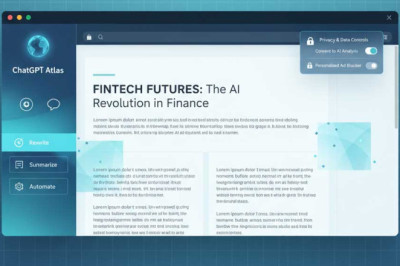
views
In a bold move that underlines its diversification beyond stablecoins, Tether Holdings plans to dramatically expand its lending to commodities traders after extending roughly $1.5 billion in credit to the sector, according to statements from Paolo Ardoino, the company’s chief executive. The pledge signals a deepening commitment to the traditional trade-finance ecosystem while leveraging Tether’s liquidity options to support global commodity markets.
Lede and context
-
Ardoino disclosed the planned expansion as part of a broader strategy to channel stablecoin reserves and traditional treasury-style assets into high-liquidity finance for commodities. The expansion comes on the heels of the recent credit extension, which critics and supporters alike are watching for its implications on liquidity, risk, and regulatory oversight [web sources: Bloomberg coverage and related reports].
-
The move places Tether in closer alignment with established trade-finance players while retaining its distinctive crypto-finance capabilities. By targeting commodities such as crude oil, metals, and agricultural inputs, the company aims to become a more frequent liquidity partner for traders navigating global supply chains [web sources: coverage of Ardoino’s remarks and related analyses].
Market implications
-
Liquidity impact: Expanding lending in commodities can smooth short-term funding gaps for producers, intermediaries, and refiners, potentially reducing friction in settlement cycles and enabling larger, faster trades. If successful, the program could amplify liquidity across commodity corridors, particularly where traditional banks have retrenched or disciplined risk exposure [context from industry reporting].
-
Pricing and terms: A larger, more active lender in commodities typically influences financing terms—collateral requirements, tenor, and interest margins—shaping the cost of capital for traders. Market participants are watching how Tether’s attributable funding costs compare with conventional trade-finance facilities and whether credit lines will be extended to a broader set of counterparties [context from trade-finance analyses].
-
Risk considerations: The expansion hinges on robust underwriting, transparent collateral practices, and vigilant risk controls, given commodity price volatility and geopolitical risks. Regulators may scrutinize reporting, disclosures, and the alignment of crypto-backed liquidity with existing financial safeguards to ensure resilience and market integrity [regulatory context from recent coverage].
Strategic rationale
-
Diversification of revenue: For a company known for its stablecoin ecosystem, channeling profits from reserve management into lending and trade finance diversifies revenue streams and broadens the utility of its liquidity programs. Ardoino has framed the commodities-finance push as a natural extension of Tether’s liquidity management discipline and risk-adjusted return objectives [indirect signals from leadership interviews].
-
Synergies with treasury operations: Leveraging a reserve-backed model allows Tether to mobilize capital quickly for short-term, high-turnover transactions in commodities markets. This approach aims to complement traditional bank facilities while harnessing the speed and operational flexibility of crypto-enabled funding mechanisms [industry analyses and company disclosures].
Regulatory and industry reaction
-
Regulatory scrutiny is likely to intensify as crypto-enabled trade finance grows. Authorities will assess compliance, disclosure practices, and the adequacy of collateral and capital buffers in any expansion of lending to non-banking counterparties within the commodities space. Market participants may call for clearer standards to prevent mispricing of risk and to safeguard financial system stability [regulatory commentary in recent coverage].
-
Industry peers will watch competitor positioning as crypto-firm liquidity enters more traditional finance domains. The potential for increased competition could influence pricing dynamics and push for greater transparency in the governance of such programs [market commentary observed in coverage of crypto-finance initiatives].
What to expect next
-
Visibility on counterparties: Investors and market observers will look for more detail on which commodities, regions, and counterparties are included in the expanded lending program, as well as tenor ranges and collateral structures.
-
Financial disclosures: As this initiative scales, stakeholders will seek clarity on risk controls, liquidity coverage, and the way profits from these activities are reported relative to Tether’s broader financial framework.
-
Regulatory dialogue: Expect continued dialogue with regulators about governance, reporting standards, and safeguards around crypto-backed liquidity applied to conventional trade finance.
Expert perspectives (possible angles for quotes or sidebars)
-
Analysts may emphasize the strategic alignment of crypto-liquidity with traditional trade finance, noting both opportunity and risk in extending credit to commodity traders through an asset-backed digital-finance model.
-
Risk-management practitioners could highlight the importance of rigorous collateral frameworks, stress testing against commodity-price shocks, and diversification across commodities and geographies.
-
Regulators and policy researchers might focus on macroprudential implications, data transparency, and the need for standardized reporting to ensure market stability.




















Comments
0 comment